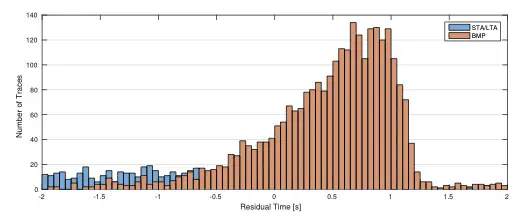Automatic detection of P- and S-wave arrival times new strategies based on the modified fractal method and basic matching pursuit

Abstract
In this work, new strategies for automatic identification of P- and S-wave arrival times from digital recorded local seismograms are proposed and analyzed. The database of arrival times previously identified by a human reader was compared with automatic identification techniques based on the Fourier transformation in reduced time (spectrograms), fractal analysis, and the basic matching pursuit algorithm. The first two techniques were used to identify the P-wave arrival times, while the third was used for the identification of the S-wave. For validation, the results were compared with the short-time average over long-time average (STA/LTA) of Rietbrock et al., Geophys Res Lett 39(8), (2012) for the database of aftershocks of the 2010 Maule M w = 8.8 earthquake. The identifiers proposed in this work exhibit good results that outperform the STA/LTA identifier in many scenarios. The average difference from the reference picks (times obtained by the human reader) in P- and S-wave arrival times is ∼ 1 s.